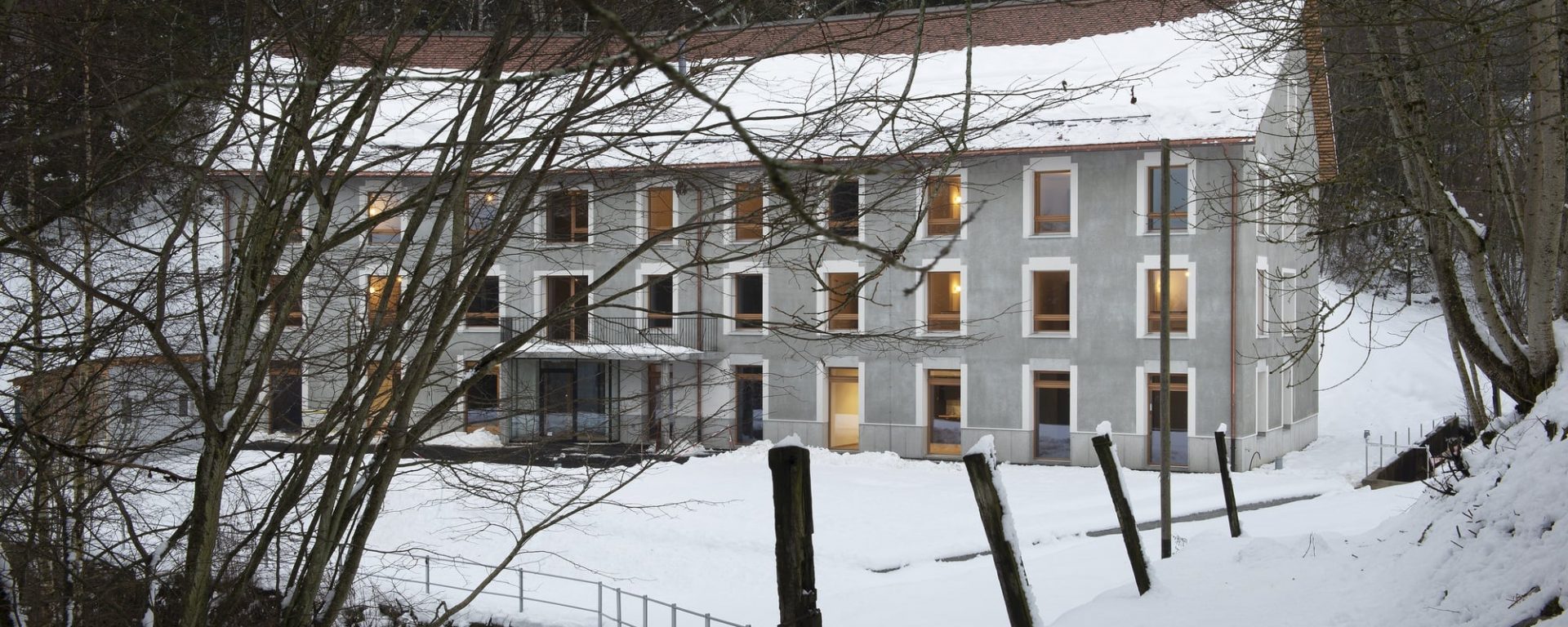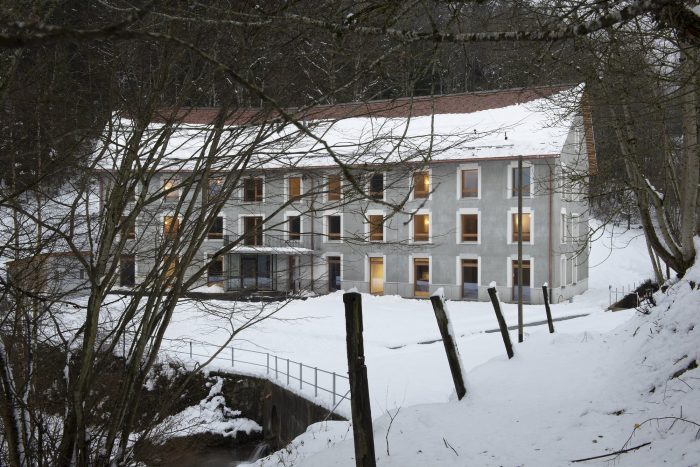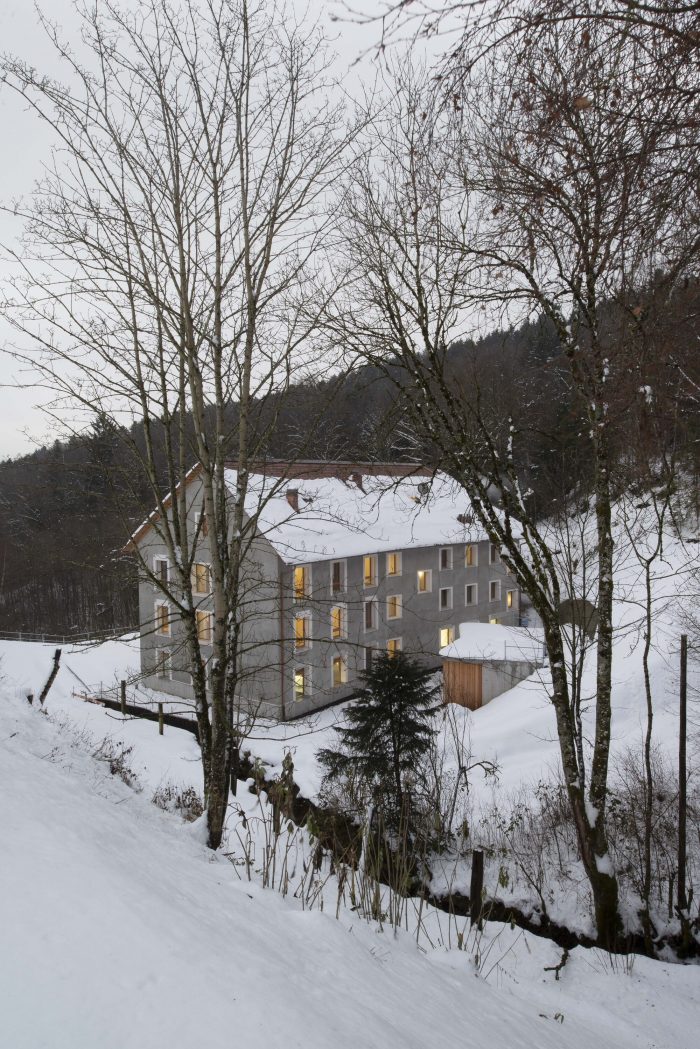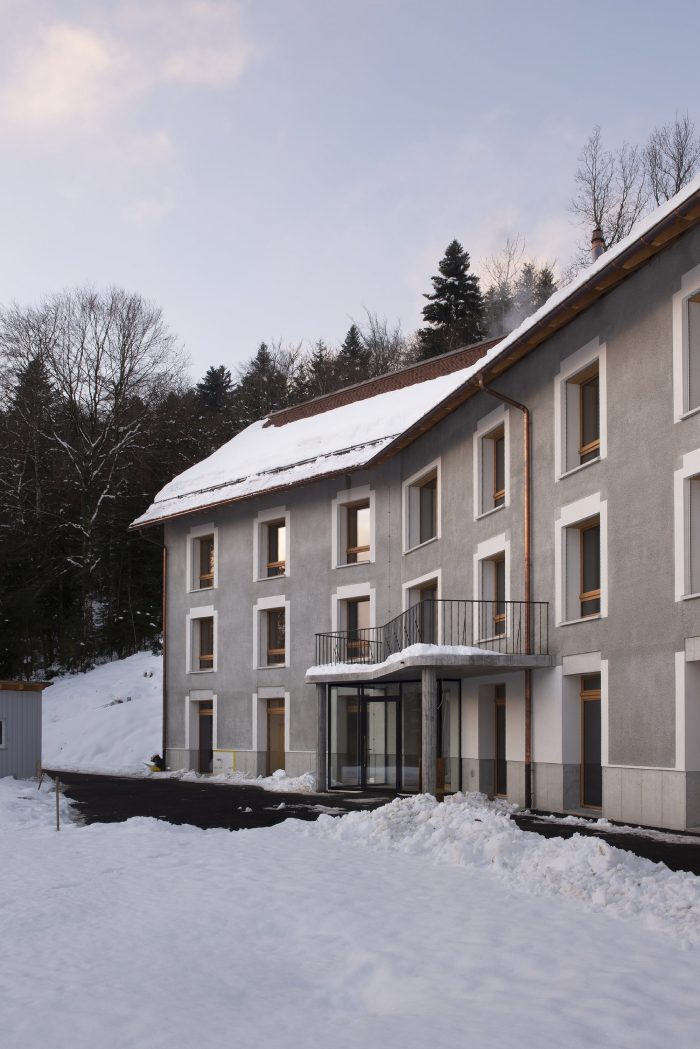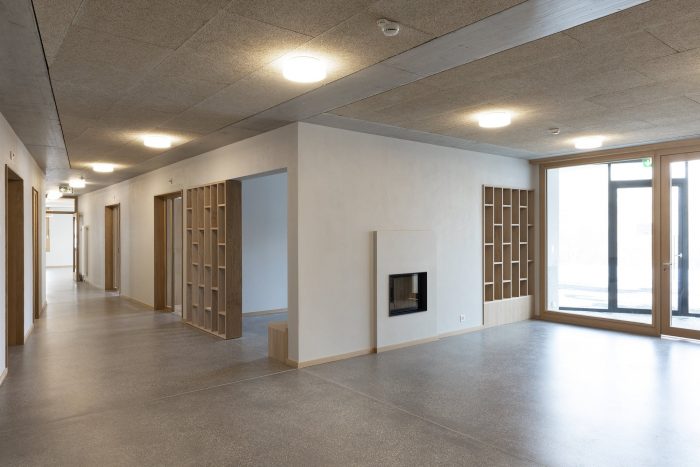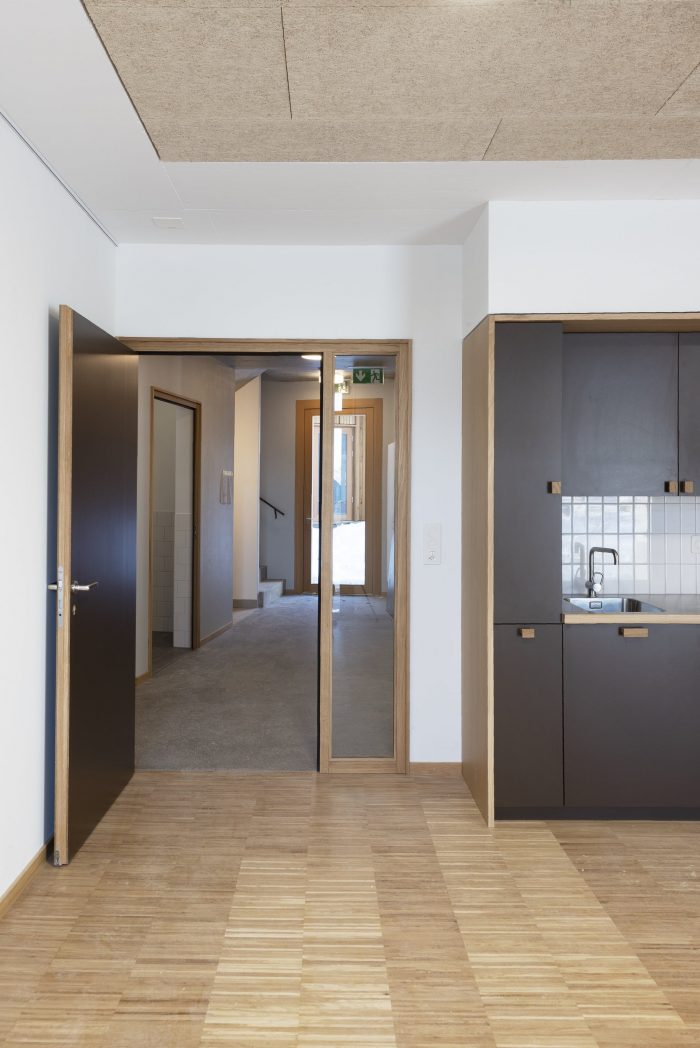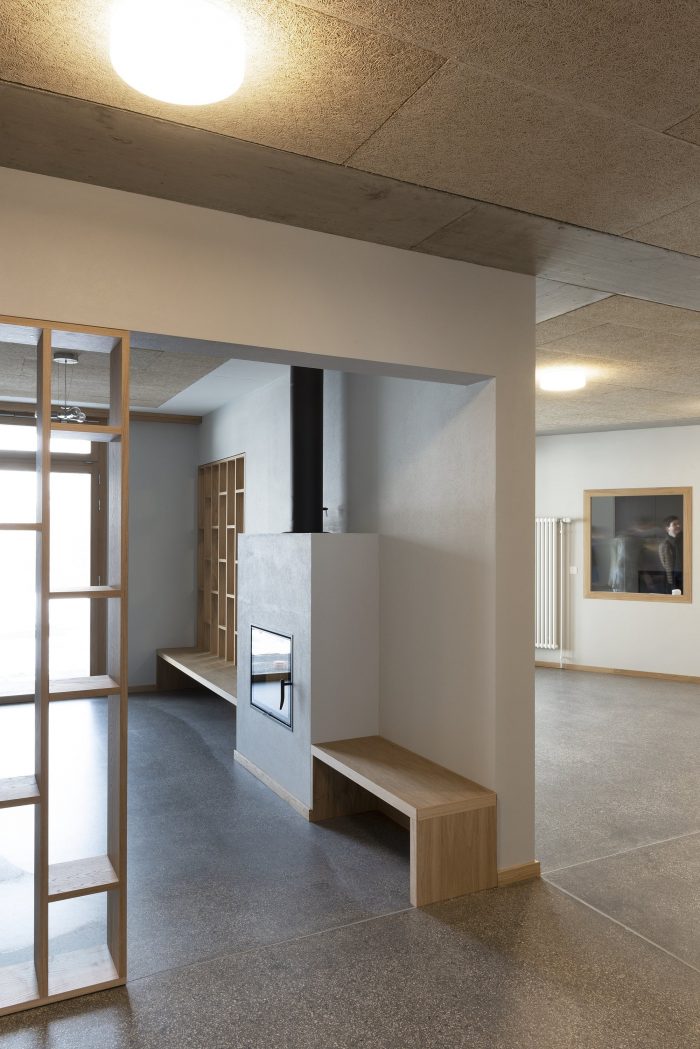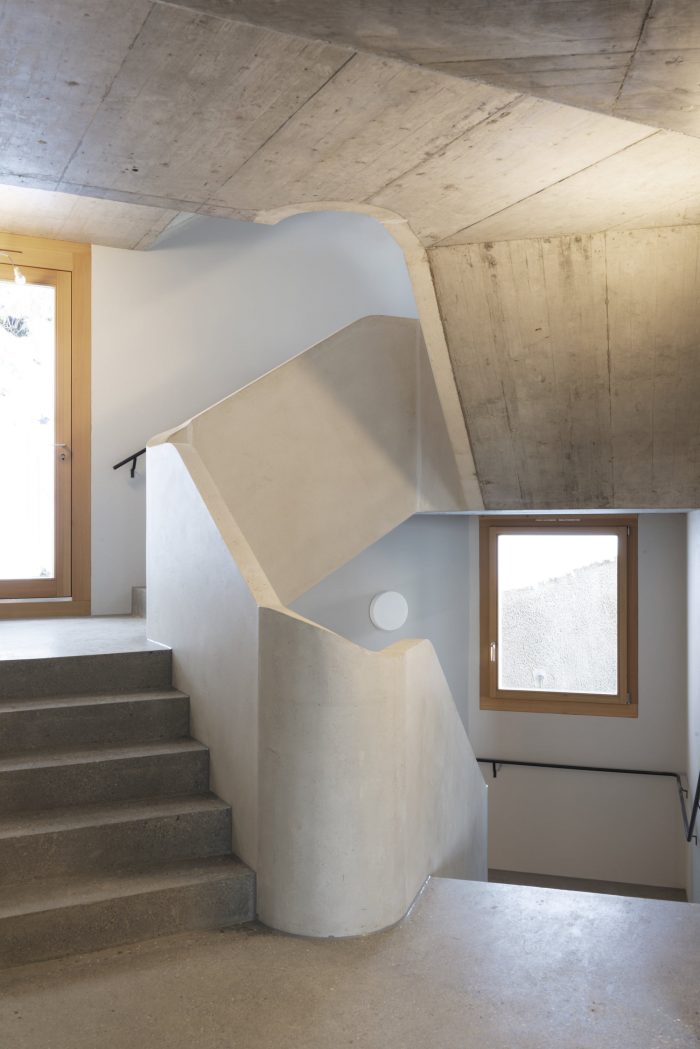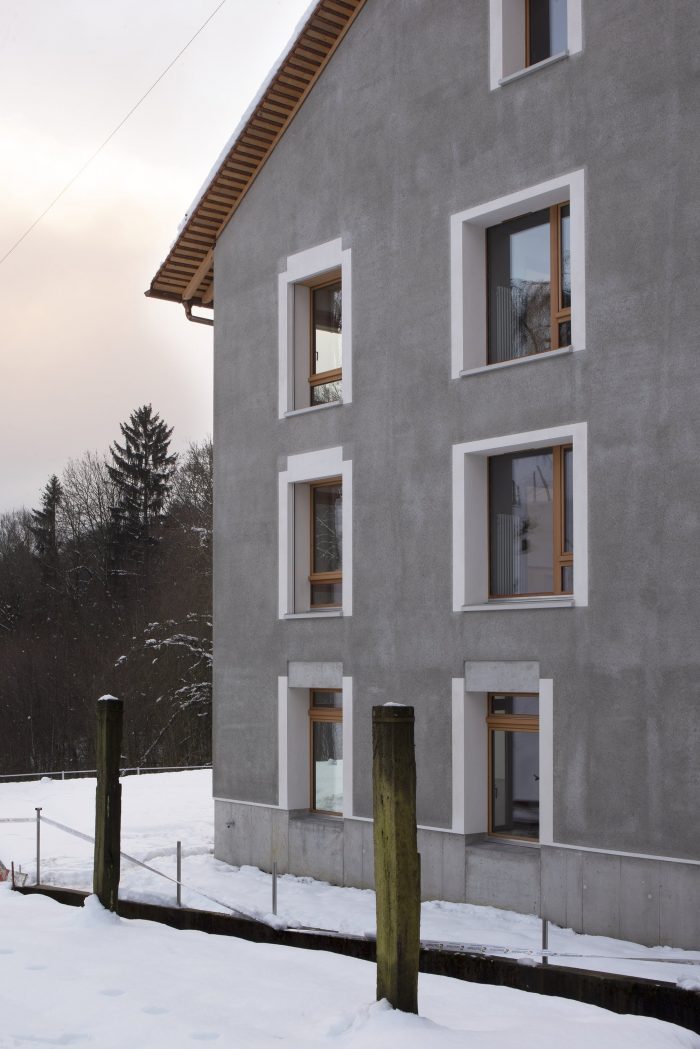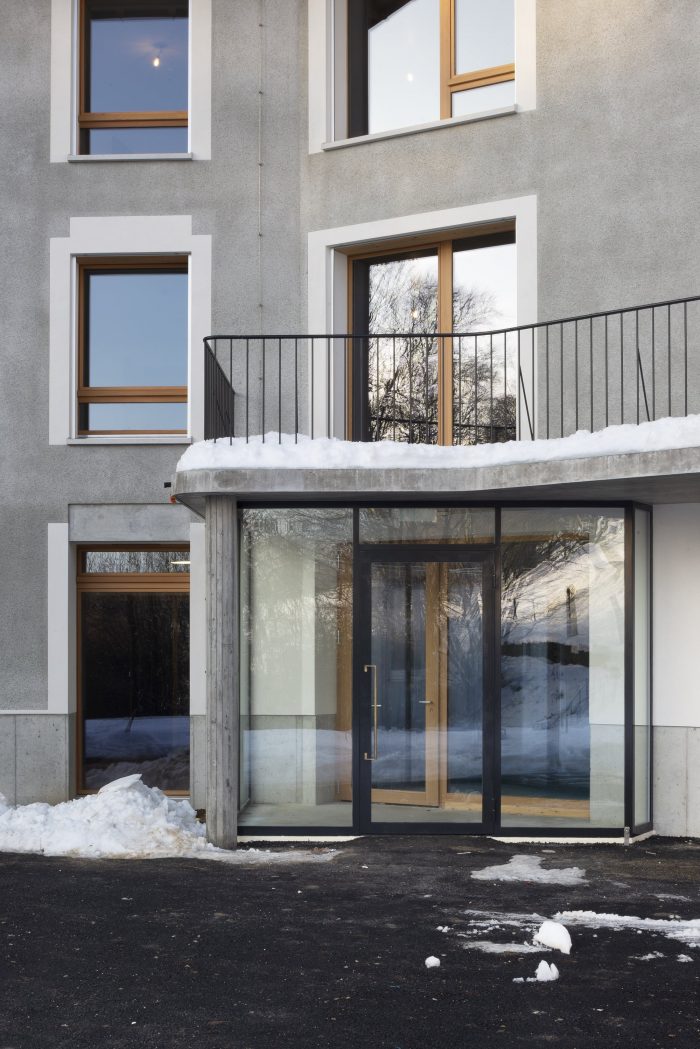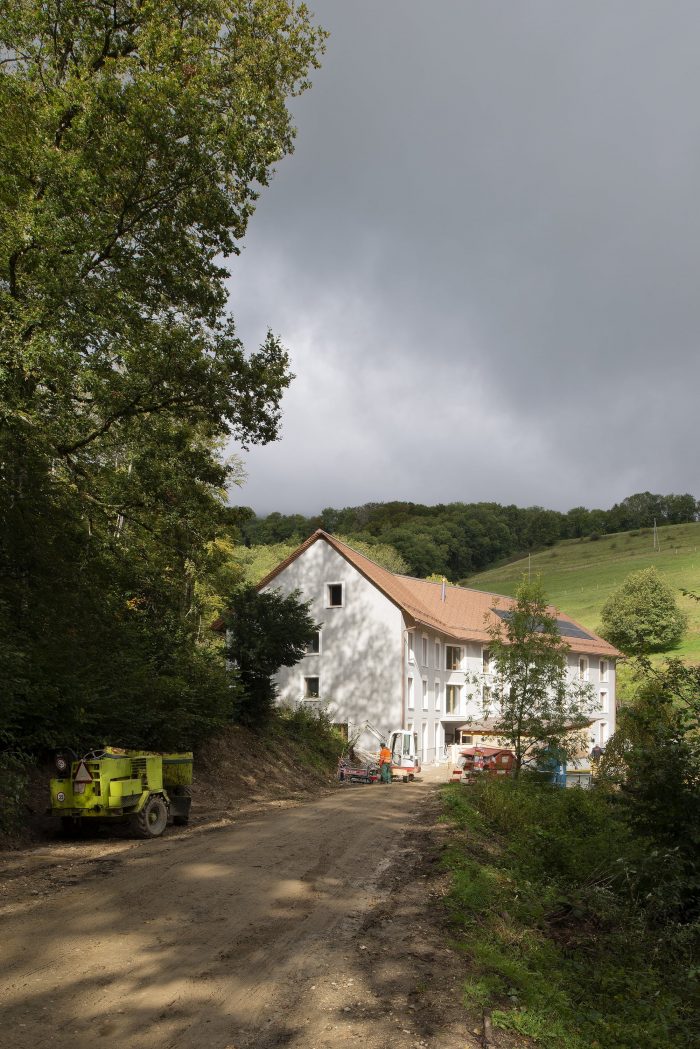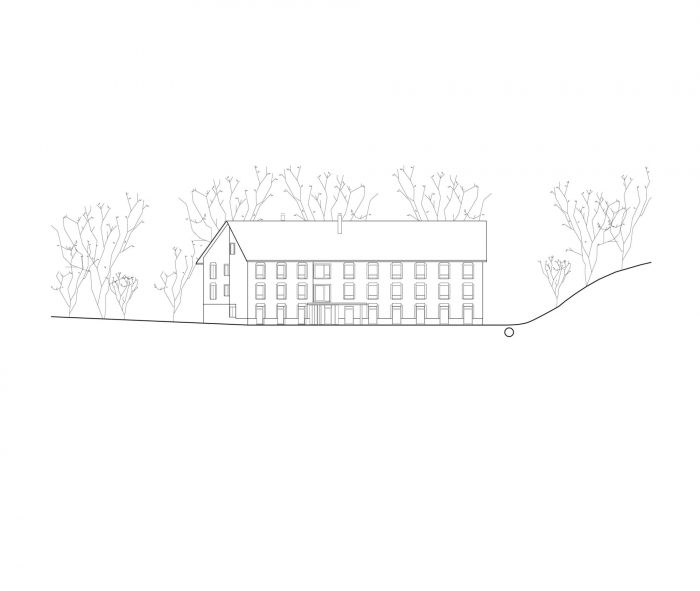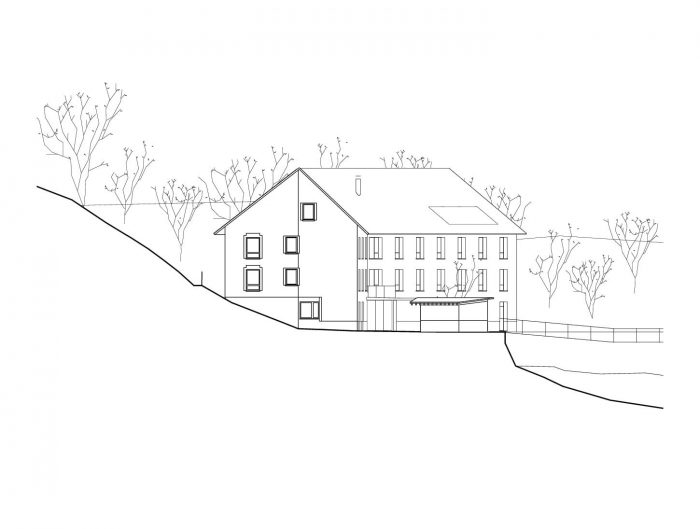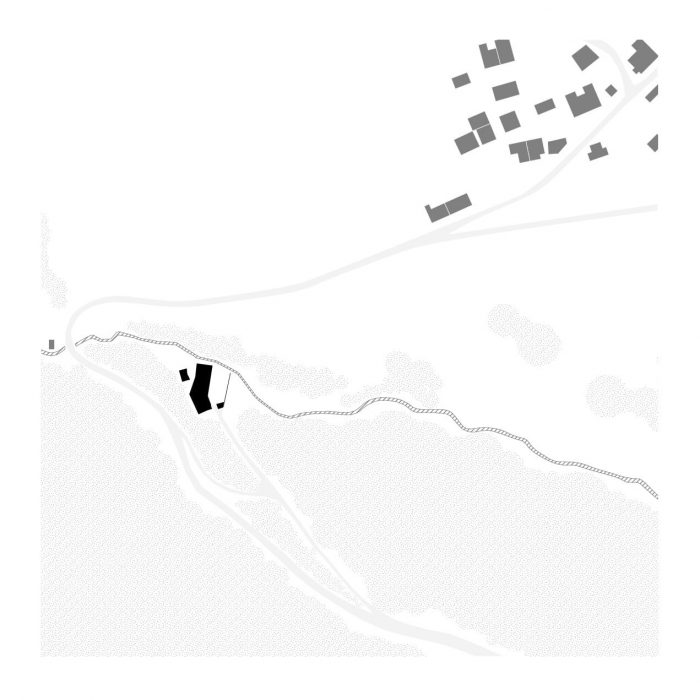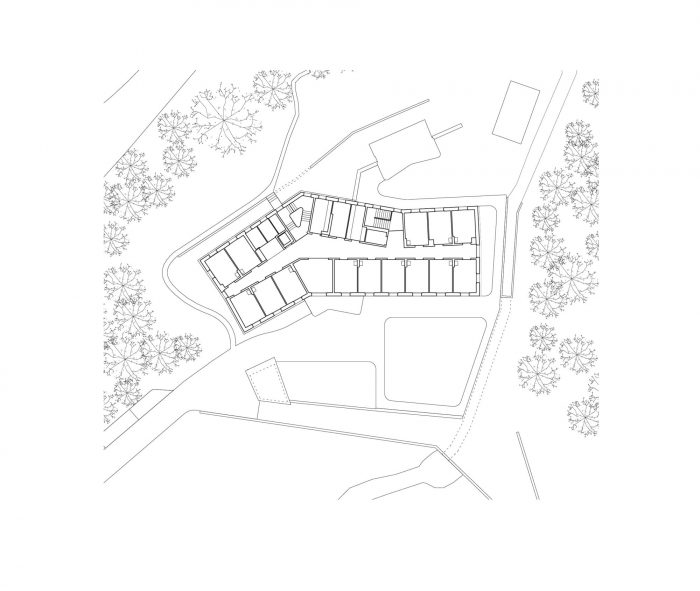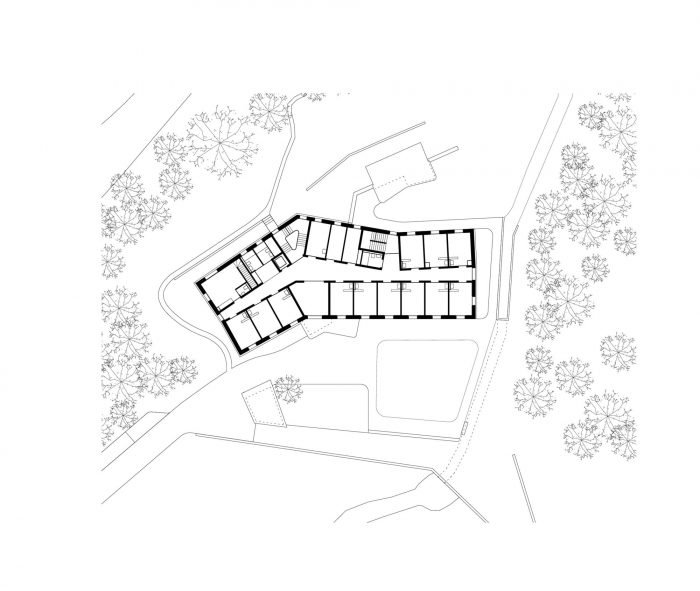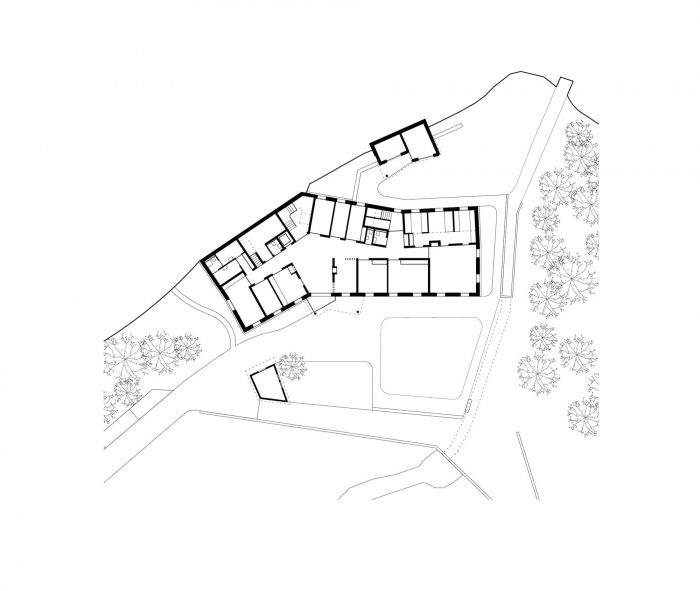La Sylvabelle是附近的La Rochelle的姐妹,占据了普罗旺斯村附近的一个山谷的凹陷处,在一个取代了磨坊的老寄宿屋的位置。该项目是连续的拆除和重建历史的一部分,自中世纪以来,这就是这个地方的特点。
La Sylvabelle is a sister to the nearby La Rochelle and occupies the hollow of a valley near the village of Provence, on the site of an old boarding house that replaced a mill. The project is part of a continuous history of successive demolitions and reconstructions that have characterised this place since the Middle Ages.
新建筑采用了现有建筑的布局和尺寸,它向南延伸,变形以适应场地的地形。因此,它遵循了通道的曲线,并保留了向东开放的海滨大道的表面。上层是卧室,而底层是办公室和公共区域,与河滨大道在同一水平线上。中央分布空间吸收了计划的变形,扩展到外墙,形成入口大厅、餐厅、客厅和楼梯间。作为该项目唯一的垂直特征,主要的三角形楼梯在建筑的中心具有雄伟的象征意义。
The new building takes up the layout and size of the existing building, which it extends to the south, deforming to fit the topography of the site. It thus follows the curve of the access road and preserves the surface of the esplanade open to the east. The upper floors house the bedrooms while the ground floor contains the offices and communal areas, on the same level as the esplanade. The central distributive space absorbs the deformations of the plan, expanding to the façade to form the entrance hall, dining room, living rooms and stairwells. The only vertical feature of the project, the main triangular staircase takes on a majestic and symbolic dimension at the heart of the building.
该建筑的建筑处理和材料寻求与该地区的农村建筑相类似(圆顶、平瓦、屋檐、石膏砌体、适度的开口、窗框…)。然而,它在细节的处理和现代建筑元素的整合方面有所不同。
The architectural treatment and the materiality of the building seek analogies with the rural constructions of the region (socle, flat tiles, eaves, plastered masonry, modest openings, window frames …). It differs, however, in the treatment of details and the integration of contemporary construction elements.
Architects: Wolff Obrist architectes
Area : 1900 m²
Year : 2021
Photographs :Cécile Monnier
Manufacturers : Gasser ceramic
Lead Architects : Alain Wolff, Marina Hokari & Jérôme Quinodoz
Engineering : MCR & Associés Ingénieurs civils
City : Provence
Country : Switzerland

